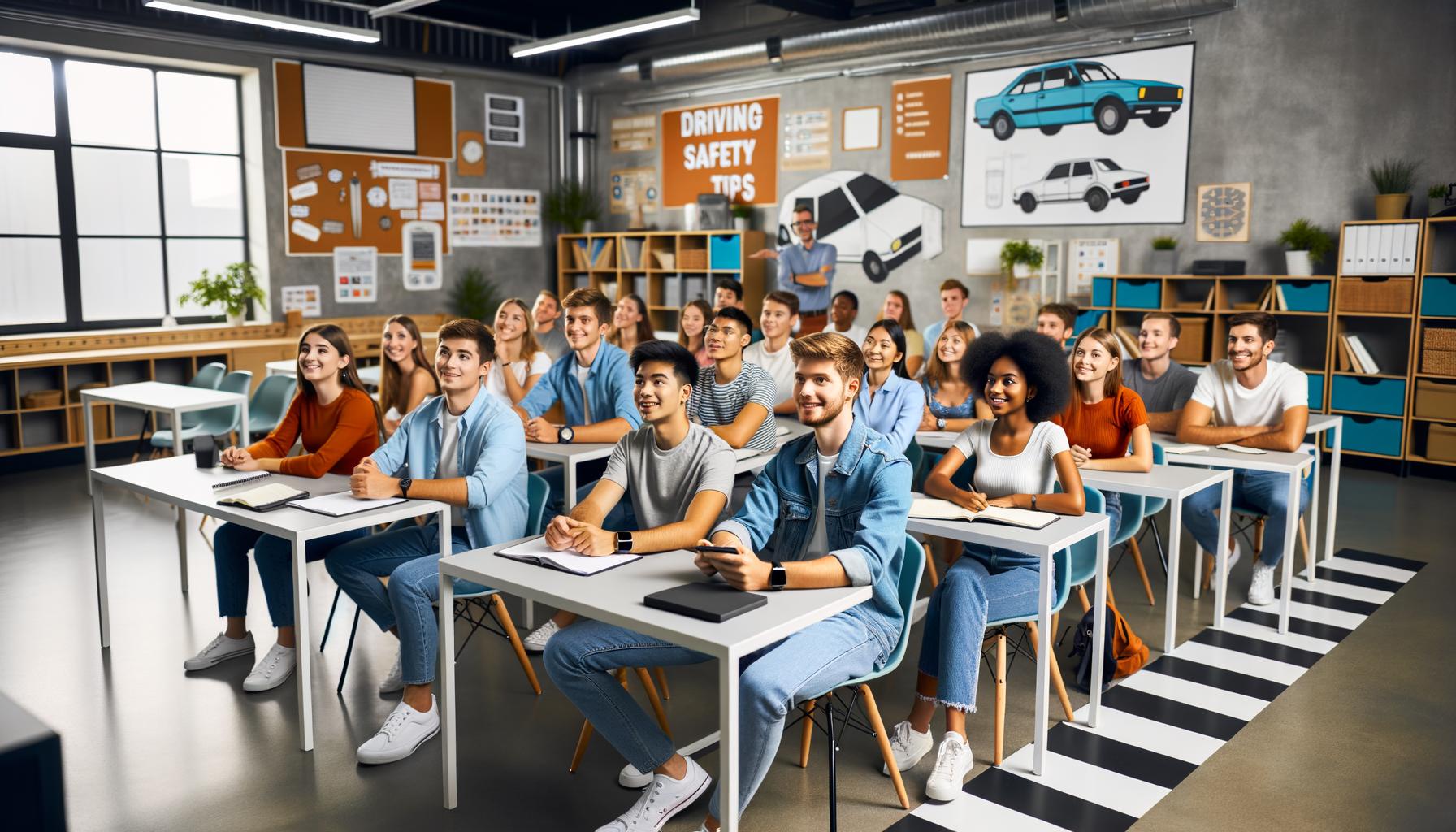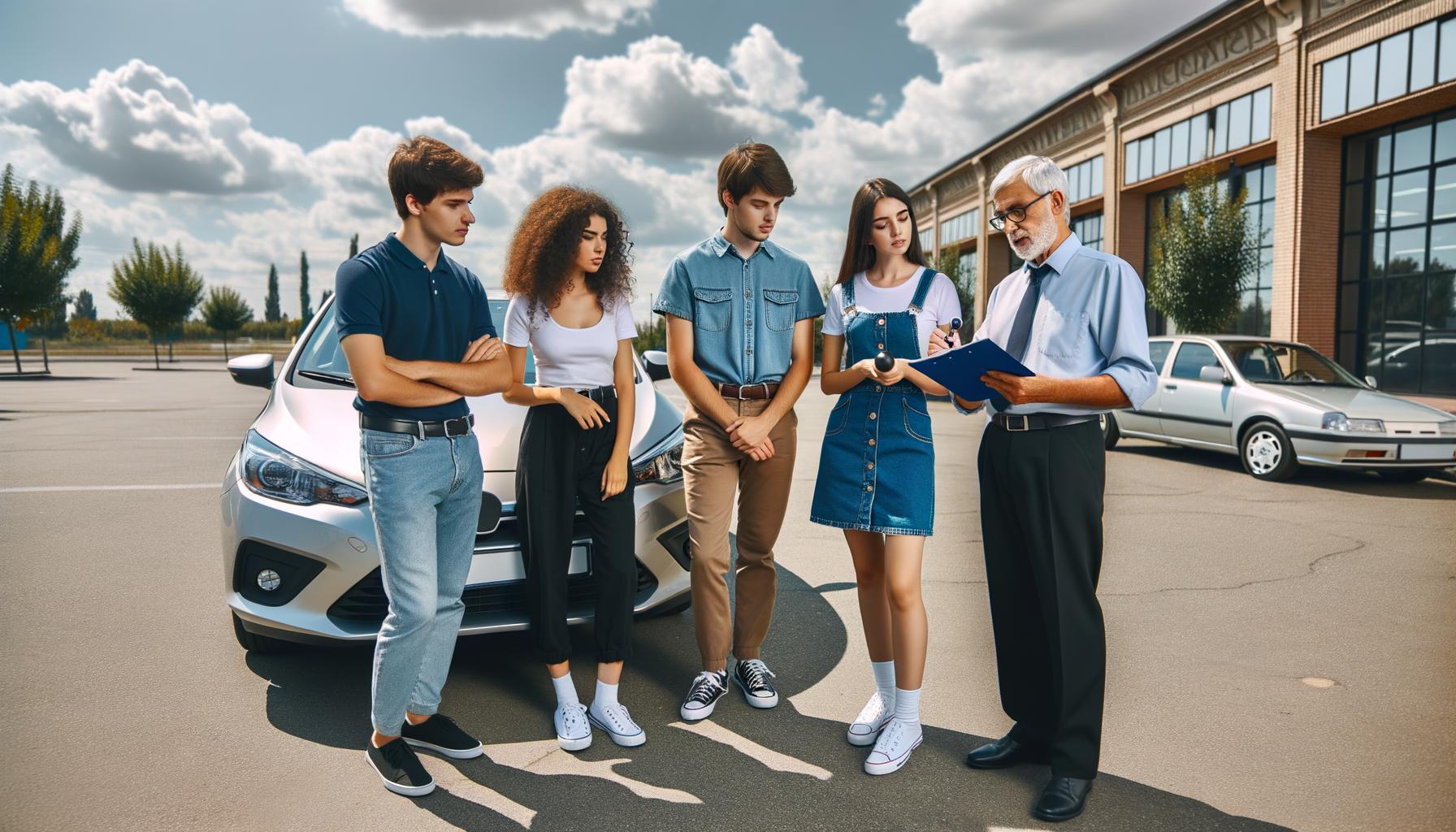Learning to Drive: Avoiding Common Crash Scenarios
Learning to drive a car safely is a critical skill that can prevent crashes and save lives. At The Wiser Driver Driving School, we’ve seen firsthand how understanding common accident scenarios can significantly reduce risks on the road.
This blog post will explore these scenarios and provide practical defensive driving techniques to help new drivers stay safe. We’ll also share essential tips for avoiding distractions and maintaining your vehicle, empowering you to become a confident and responsible driver.
What Are the Most Common Crash Scenarios?
Understanding common crash scenarios helps new drivers stay safe on the road. This knowledge empowers drivers to anticipate and avoid potential accidents.
Rear-End Collisions: A Leading Cause of Accidents
Rear-end collisions account for approximately 29 percent of all crashes nationwide. These accidents often occur due to distracted driving, such as texting or talking on the phone. To avoid rear-end collisions, maintain a safe following distance of at least three seconds from the vehicle in front of you. This gap allows more time to react if the car ahead suddenly stops.
Intersection Accidents: Navigating Complex Traffic Patterns
Intersections are hotspots for accidents, especially T-bone collisions where one vehicle hits the side of another. Common causes include running red lights and making illegal turns. To reduce your risk, approach intersections with caution, even when you have the right of way. Look both ways before proceeding, and prepare to stop if another driver fails to yield.
Lane Change Crashes: The Importance of Blind Spot Awareness
Lane change crashes often result from drivers failing to check their blind spots or signal their intentions. Before changing lanes, use your turn signals and check your mirrors. Additionally, perform a quick over-the-shoulder glance to ensure no vehicles are in your blind spot. Larger vehicles like trucks and buses have more extensive blind spots, so give them extra space on the road.
Single-Vehicle Accidents: Speed and Road Conditions Matter
Single-vehicle accidents frequently occur due to speeding, poor weather conditions, or driver fatigue. To prevent these crashes, adjust your speed to match road and weather conditions. If you feel tired, take a break or switch drivers if possible. The NHTSA estimates that in 2017, 91,000 police-reported crashes involved drowsy drivers, highlighting the importance of staying alert behind the wheel.

Understanding these common crash scenarios and implementing defensive driving techniques significantly reduces your risk on the road. The next section will explore specific defensive driving techniques that can help you navigate these situations safely and confidently.
How Defensive Driving Techniques Prevent Crashes
Defensive driving techniques form the foundation of safe driving practices. These skills can significantly reduce the risk of accidents on the road. Let’s explore some key strategies that every driver should master.
The Three-Second Rule: Maintaining Safe Distance
The three-second rule provides a simple yet effective method to maintain a safe following distance. Increasing the distance between you and the car ahead can help give you the time you need to recognize a hazard and respond safely. Here’s how to apply it:
- Choose a fixed point ahead of the car in front of you (e.g., a road sign).
- When the car passes that point, start counting.
- If you reach the same point before you count to three, you’re too close.

In adverse weather conditions, increase this to a six-second gap. This technique allows ample time to react to sudden changes in traffic.
Effective Scanning: Anticipating Potential Hazards
Proactive scanning of your surroundings helps you anticipate potential dangers. Train yourself to look several cars ahead, not just at the vehicle in front of you. This practice allows you to:
-
Spot potential dangers early
-
Give yourself more time to react
-
Pay attention to other drivers’ behaviors
-
Notice pedestrians and obstacles on the road
Mirror and Blind Spot Checks: Preventing Lane Change Accidents
Proper use of mirrors and blind spot checks can prevent many accidents, especially during lane changes. Follow these steps:
- Adjust your mirrors correctly before starting your journey.
- Check your mirrors every 5-8 seconds (as recommended by the National Highway Traffic Safety Administration).
- Perform a quick over-the-shoulder check when changing lanes to ensure your blind spot is clear.
Speed Adjustment: Adapting to Road Conditions
Adapting your speed to road conditions is a critical defensive driving technique. Approximately 21% of vehicle crashes – nearly 1,235,000 – are weather-related. Try to:
-
Reduce your speed in rain, snow, or fog
-
Drive below the speed limit in adverse weather or heavy traffic
-
Remember that posted speed limits are for ideal conditions
These defensive driving techniques can significantly reduce your risk of accidents. Mastering these skills requires practice and guidance from experienced instructors. In the next section, we’ll discuss practical tips for new drivers to further enhance their safety on the road.
How Can New Drivers Stay Safe on the Road?
New drivers face unique challenges as they navigate the complexities of the road. We emphasize practical strategies to enhance safety and build confidence behind the wheel. Let’s explore some essential tips that can make a significant difference in your driving journey.
Eliminate Distractions
Distracted driving is a leading cause of accidents, especially among new drivers. The National Highway Traffic Safety Administration reports data on every fatal crash within the United States. To combat this, we recommend:
- Silence your phone and place it out of reach.
- Set up your GPS and music playlist before you start your journey.
- Avoid eating or drinking while you drive.
- Pull over if you need to attend to something urgently.
Maintain Your Vehicle
Regular vehicle maintenance isn’t just about preserving your car’s value; it’s a vital safety measure. Car Care inspections reveal 80% of vehicles need service, repair, or new parts. To ensure your vehicle is road-ready:
- Check tire pressure and tread depth monthly.
- Replace windshield wipers every 6-12 months.
- Follow your vehicle’s recommended maintenance schedule.
- Address any unusual noises or vibrations promptly.
Master Traffic Laws
Understanding and following traffic laws is non-negotiable for safe driving. The Insurance Institute for Highway Safety notes that traffic law violations contribute to a significant number of fatal crashes. To stay on the right side of the law:
- Review your state’s driver’s handbook regularly.
- Pay attention to changes in local traffic laws.
- Obey speed limits and traffic signals without exception.
- Always yield right-of-way when required.
Sharpen Your Situational Awareness
Developing strong situational awareness can help you anticipate and avoid potential hazards. The American Automobile Association (AAA) emphasizes the importance of this skill in preventing accidents. To improve your awareness:
- Regularly scan your surroundings (including sidewalks and intersections).
- Use your mirrors frequently to monitor traffic behind and beside you.
- Be aware of weather conditions and adjust your driving accordingly.
- Look for potential escape routes in case of emergencies.

These practical tips can significantly reduce your risk on the road. Becoming a skilled driver is an ongoing process. We offer comprehensive programs to help you build these important skills and become a confident, safe driver. Our experienced instructors provide hands-on learning experiences tailored to your needs, ensuring you’re well-prepared for the challenges of the road.
Final Thoughts
Understanding common crash scenarios empowers new drivers to navigate roads safely. Defensive driving techniques reduce risks significantly, but the journey to become a skilled driver extends beyond obtaining a license. Continuous education and practice adapt drivers to new challenges and improve their skills over time.

Professional instruction makes a substantial difference in driver development. The Wiser Driver Driving School offers comprehensive programs covering state-required courses, personalized driving lessons, and defensive driving techniques. Our experienced instructors provide hands-on learning experiences to prepare drivers for real-world situations.
Learning to drive and avoiding car crashes requires ongoing commitment. Staying informed about road safety, practicing defensive techniques, and seeking professional guidance when needed contribute to safer driving. Whether you start your driving journey or enhance existing skills, we support you in becoming a more confident and careful driver.
















































